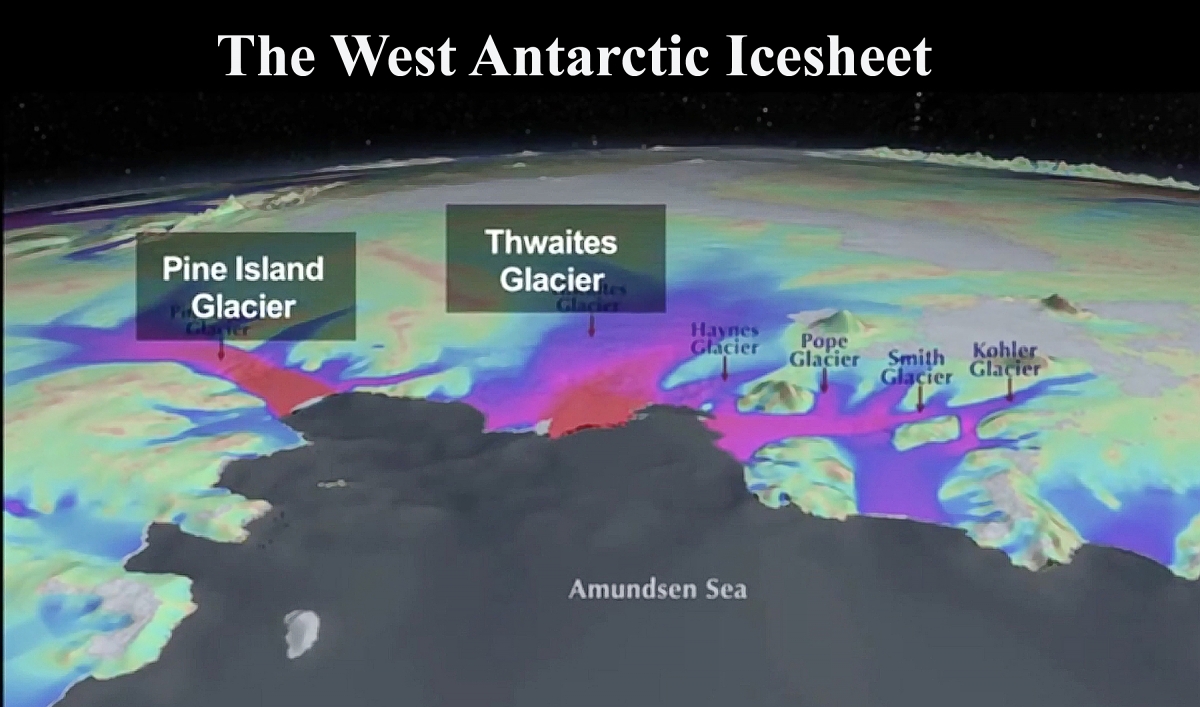Awesome Changes in Greenland and Antarctica via Youtube clips
It defies our imagination that sea level will change dramatically. Actually it is more than our imagination, it is our entire way of designing our amazing coastal-based society. For centuries we have been constructing larger, more expensive, and more permanent buildings and infrastructure right on the shoreline as if it can be held in its current location.
Two short videos on Youtube give good witness to what is now unfolding in ways that are unprecedented in human civilization. Chasing Ice was a recent feature film by James Balog that captured time lapse photography from the polar regions to show the change over a few years. In his four minute excerpt from Chasing Ice above, you can see stunning documentation from Greenland in 2008 that illustrates the extreme melting that is now underway.
 At the other side of the world, in Antarctica, there is a growing body of evidence that catastrophic sea level rise could occur much sooner than scientists and models have considered. The “Pine Island Glaciers” are six particular glaciers that will cause approximately ten feet (3 meters) of sea level rise when they slide into the sea. The majority of scientists still hold to the belief that this will not happen for at least a century or more. But as this six minute video Meltwater Pulse 2B shows, some highly respected scientists from NASA and elsewhere are getting concerned that catastrophe could happen even sooner on the current path of warming and melting.
At the other side of the world, in Antarctica, there is a growing body of evidence that catastrophic sea level rise could occur much sooner than scientists and models have considered. The “Pine Island Glaciers” are six particular glaciers that will cause approximately ten feet (3 meters) of sea level rise when they slide into the sea. The majority of scientists still hold to the belief that this will not happen for at least a century or more. But as this six minute video Meltwater Pulse 2B shows, some highly respected scientists from NASA and elsewhere are getting concerned that catastrophe could happen even sooner on the current path of warming and melting.
Understandably the scientific community does not want to alarm people, by putting into forecasts things that they are uncertain about, referring to such projections of describing something that proves untrue as a “Type 1 error.” Because of the rapid pace of warming and the inability to know for certain when glaciers such as Pine Island could slide into the sea, there is a growing group within the scientific community that is concerned about what is known as a “Type 2 error” — not describing something, that will happen.
We know that the ice sheets of Greenland and Antarctica have collapsed before causing tens of feet (many meters) of sea level rise in less than a century. We are now warming at unprecedented rates meaning that we can not accurately predict how the great ice sheets in those two locations will collapse. We should not panic. Fortunately this is not like catastrophes that can happen suddenly like earthquakes, tornadoes, or tsunamis.
According to the latest evidence from Antarctica those Pine Island glaciers cannot slide into the sea for at least a couple of decades due to the “grounding line” as shown. Even once those glaciers start to slide or disgorge, it is estimated that it would take a minimum of a decade or two for the Thwaites Glacier, the largest one to move into the sea substantially raising sea level.
We should begin planning for the new shoreline as sea level will change dramatically some time in the next few centuries, even if the models can not yet show us which decade it will happen. As those videos from Greenland and Antarctica show, dramatic changes are taking place now. While this almost inconceivable change to our coastline will create crisis, it will also present opportunity. Fortunately we still have some time to plan and adapt — even though it is a daunting challenge, that has largely elicited reactions of denial and delay.
It is important to look at ADAPTATION to higher sea level, while we increase efforts to slow the warming (often referred to as mitigation) by reducing greenhouse gases. Due to the excess heat already stored in the ocean, reducing warming will not cause sea level rise to stop.
